Six types of evergreens for your landscape
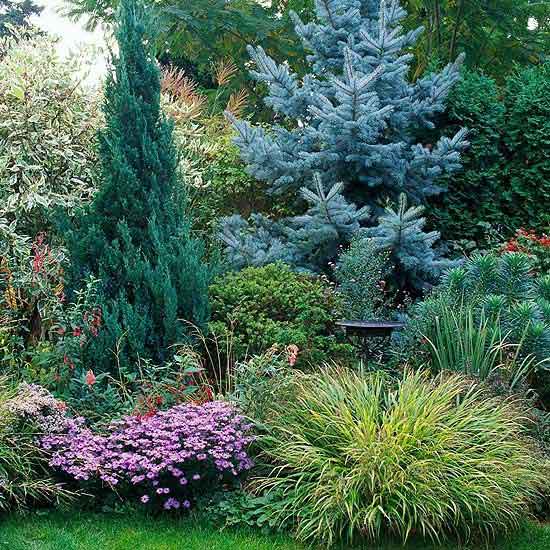
A few weeks ago, we wrote a blog on the usefulness of evergreens as part of your residential landscaping. Now we’d like to give you an idea of just how adaptable and colorful these plants can be in constructing an attractive home. As we mentioned before, evergreens come in all shapes, sizes and colors. Here are six examples of hearty specimens that can provide your yard with year-round beauty especially suited for our local climate:
Boxwood

Boxwood is one of the most versatile evergreen shrubs available for gardens in this climate zone. It’s an easy and practical choice for brightening up dreary winter landscapes, offering interesting textures, shapes and color to both formal and informal gardens. You may know boxwood as shrubs used for hedges or as large plants clipped into incredibly complex shapes in many famous gardens.
Their natural size, shape, growth rate and hardiness vary with some being rounded, others low-growing and spreading, while others are upright and more conical in shape. A broadleaf evergreen, they can withstand regular clipping and bounce back easily from shearing which makes them ideal for hedge plants and topiaries.
Green Giant Arborvitae
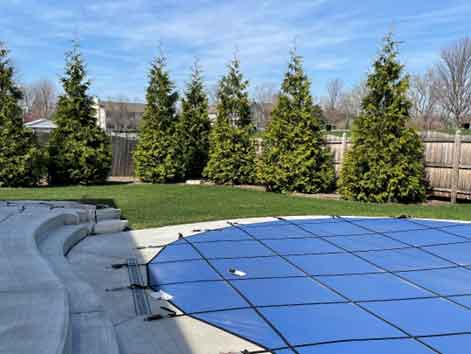
The soft green foliage of these fragrant trees looks almost the same in cold months as it does in summer. This is one of the many reasons why Green Giants are so popular. These trees are ideal as windbreakers and privacy screens which is how they’re functioning around this patio and covered pool.
Once these hardy trees are established, they are incredibly quick growing, adding five feet to their height per year. To maximize this fast growth rate, plant the trees in well-drained soil and full sun. They’ll also do well in partial shade, but full sunlight stimulates their growth to a height of up to 60 feet and also the fullness of their foliage.
Norway Spruce
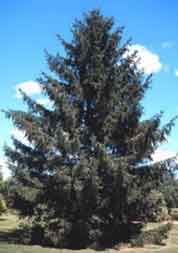
These trees are another example of how evergreens can create a beautiful screen, windbreaker or focal point for your property. Even when they’re young, the shape of this tree is a graceful pyramid with upright branches covering drooping secondary branches. Unlike some of the drought-resistant evergreens, the Norway Spruce requires well-draining soil and may need supplemental irrigation during drier periods.
The foliage is made up of short, dark green needles with soft tips and attracts various wildlife including songbirds. The seed cones hang from the secondary branches, are cylindrical in shape and provide food for nesting birds. These trees grow up to two feet a year and at maturity may reach 50 to 70 feet in height and 25 to 35 feet in width.
Black Hills Spruce
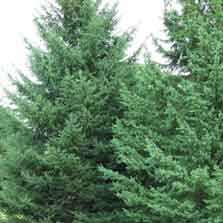
This member of the spruce family is also an excellent choice as a windbreaker and to provide a privacy screen for your property. But it has some other important attributes as well. Native to some of the coldest sections of the North American continent, it’s able to tolerate salt, drought and lower temperatures and is ideally suited for northern Illinois’s cool summers and cold winters.
Although these trees are slow growing, they eventually reach up to 50 to 70 feet in height and 15 to 25 feet in width. They have a relatively narrow, cone-shaped crown and long blue-green needles that give off a pungent aromatic scent when crushed.
Green Mountain Boxwood

The Green Mountain Boxwood is an excellent example of the versatility of evergreens. These plants can grow up to 10 feet tall in an upright pyramidal form or as hedges up to six feet wide. Their bright green foliage maintains its vibrant beauty through harsh winters, creating a dense, lush presence all year.
They do best in full sunlight and two to three inches of mulch help new plants stay moist until they’re established. And like many other evergreens, this boxwood is drought tolerant and grows best when watered once weekly during dry periods, including in winter.
Serbian Spruce
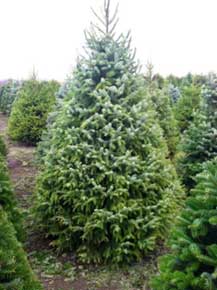
Native to Siberia, these graceful, tall trees are more than ready to face the cold winters of Illinois. Interestingly enough, they thrive in the Midwest although they have become a threatened species in their homeland. Tall and slender, they grow up 60 feet high in their native land but in our soil average a height of 40 feet and 20 feet wide.
Their branches are covered with light green to blue needles and cinnamon, purplish cones. These trees should be planted in deep, moist, well-drained soil in full to partial sunlight and grow at a slow to medium pace.
Whatever Evergreen You Choose, We’re Sure You’ll Appreciate Its Hearty Beauty.
Our part of the country can be a challenging environment for gardens, especially in the fall and winter months. But evergreens thrive in this area and,t66e44`` as windbreakers and privacy screens, turn your garden into a more comfortable and naturing habitat for other plants, wildlife and, of course, your own family. Please consider adding one or more of the trees we’ve discussed here to your own landscape. We’d be happy to tell you more about how to do so after the holidays.
Until then, have a happy, healthy and prosperous New Year!
Curt




